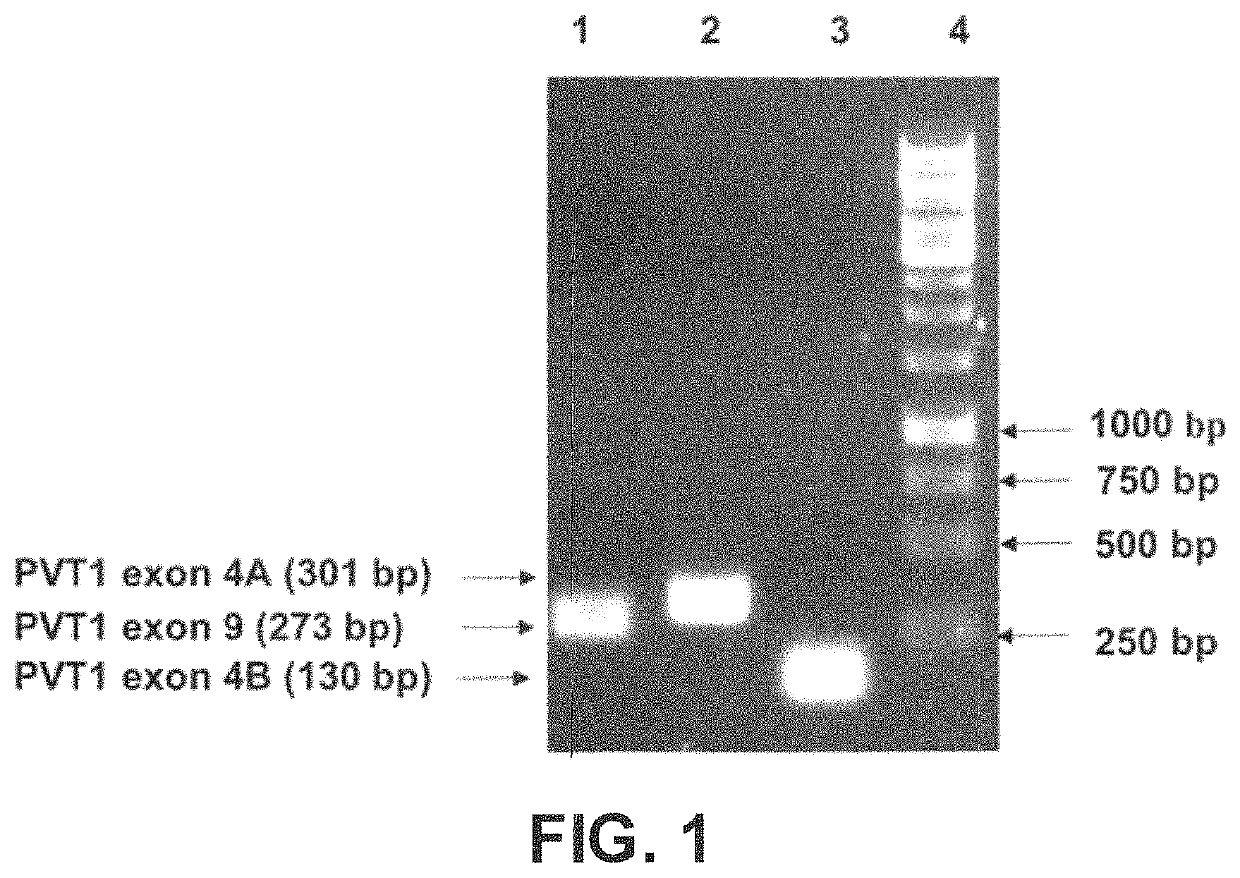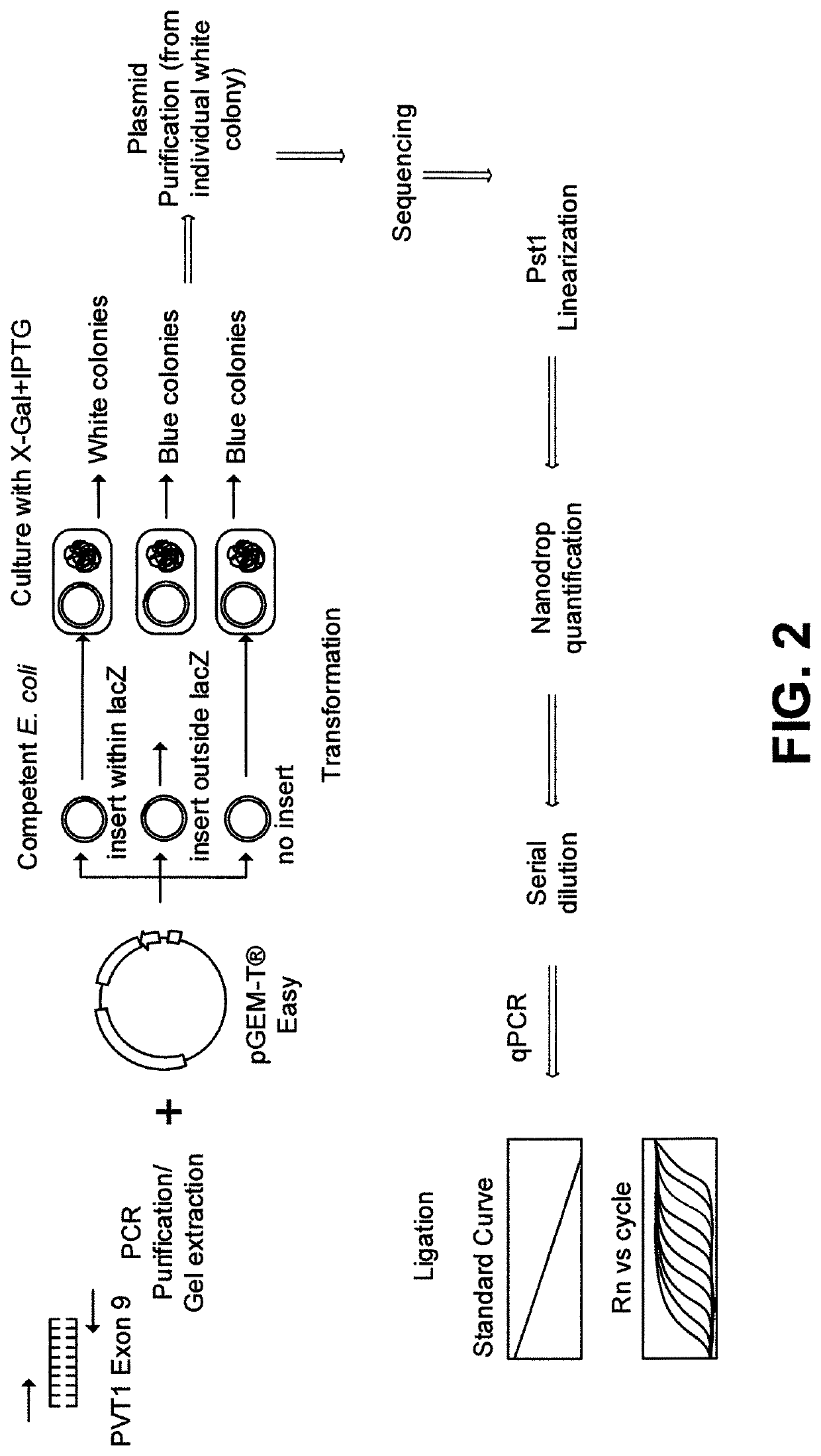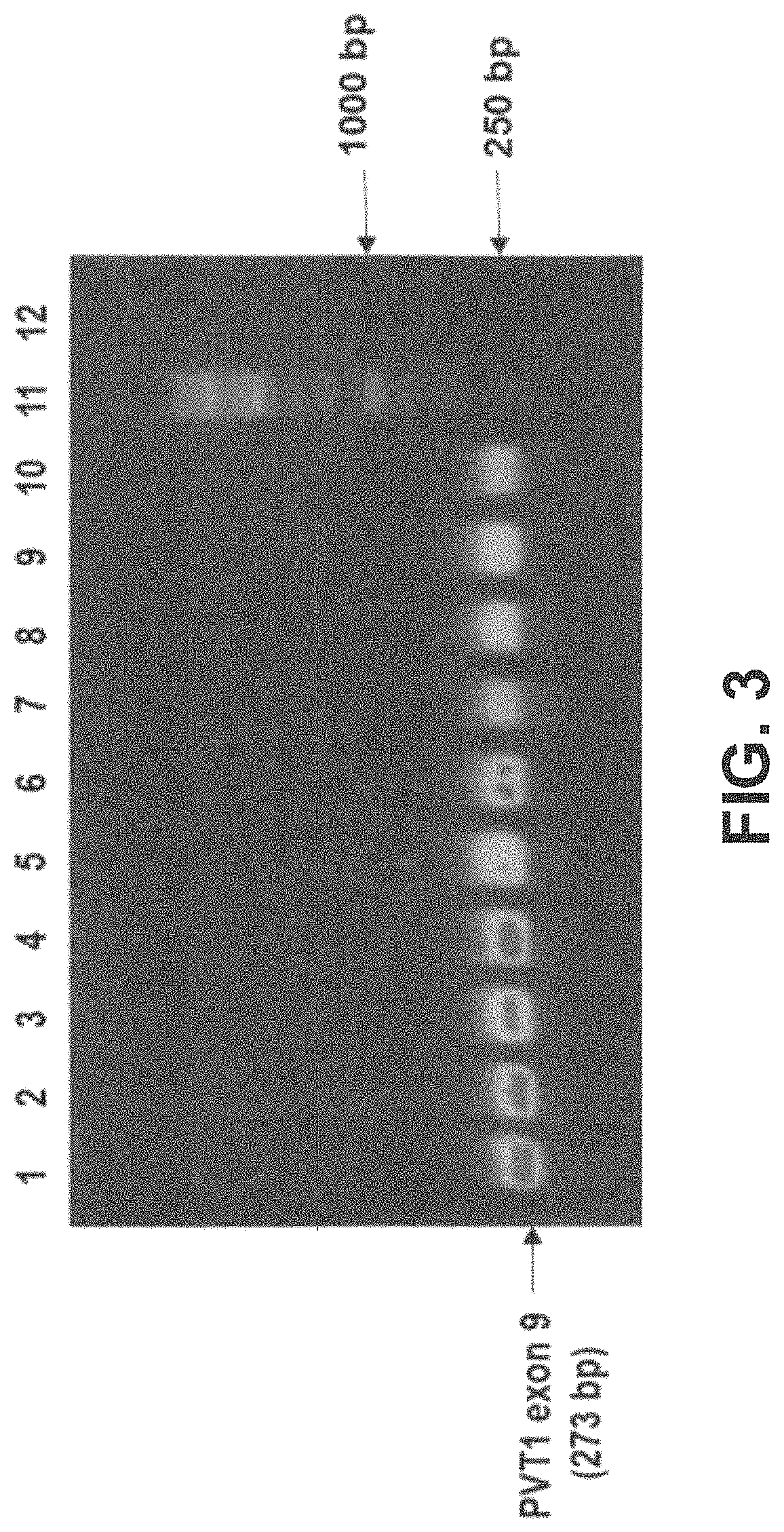Plasmid vector for expressing a PVT1 exon and method for constructing standard curve therefor
a plasmid vector and exon technology, applied in the field of plasmid vectors for expressing pvt1 exons and methods for constructing standard curves therefor, can solve the problems of complex and multi-faceted prostate cancer disparities, african ancestry is a very important risk factor, and the number of non-protein coding
- Summary
- Abstract
- Description
- Claims
- Application Information
AI Technical Summary
Benefits of technology
Problems solved by technology
Method used
Image
Examples
Embodiment Construction
[0025]This disclosure provides an absolute quantification assay for PVT1-derived transcripts in biological samples such as tissue, urine, plasma, saliva. There is currently no absolute quantification assay for any PVT1-derived transcript.
[0026]This disclosure provides expression vectors that can be used as standards to create a standard curve for absolute quantification in the detection of PVT1 exon 9 (SEQ ID NO: 1), PVT1 exon 4A (SEQ ID NO: 2), PVT1 exon 4B (SEQ ID NO: 3), and miR-1205 (SEQ ID NO: 7), and miR-1207-3p (SEQ ID NO: 8). Primers were designed for the amplification of PVT1 exon 9 (273 bp), PVT1 exon 4A (301 bp), and PVT1 exon 4B (130 bp) and PCR was performed with those gene-specific primers. The PCR product was run in 1% agarose gel (FIG. 1). For cloning of PVT1 exon 9 (SEQ ID NO: 1), PVT1 exon 4A (SEQ ID NO: 2), and PVT1 exon 4B (SEQ ID NO: 3) transcripts two different plasmid vectors pGEM®-T Easy (SEQ ID NO: 4) and pcDNA3.1 (SEQ ID NO: 5) were chosen. The reader shoul...
PUM
| Property | Measurement | Unit |
|---|---|---|
| time duration | aaaaa | aaaaa |
| time duration | aaaaa | aaaaa |
| concentrations | aaaaa | aaaaa |
Abstract
Description
Claims
Application Information
 Login to View More
Login to View More - R&D
- Intellectual Property
- Life Sciences
- Materials
- Tech Scout
- Unparalleled Data Quality
- Higher Quality Content
- 60% Fewer Hallucinations
Browse by: Latest US Patents, China's latest patents, Technical Efficacy Thesaurus, Application Domain, Technology Topic, Popular Technical Reports.
© 2025 PatSnap. All rights reserved.Legal|Privacy policy|Modern Slavery Act Transparency Statement|Sitemap|About US| Contact US: help@patsnap.com



